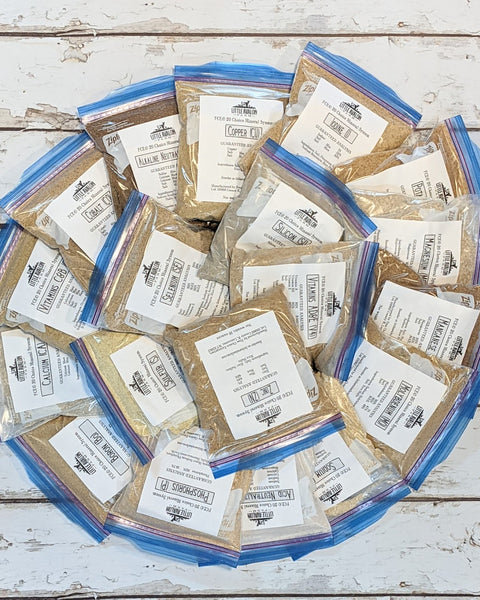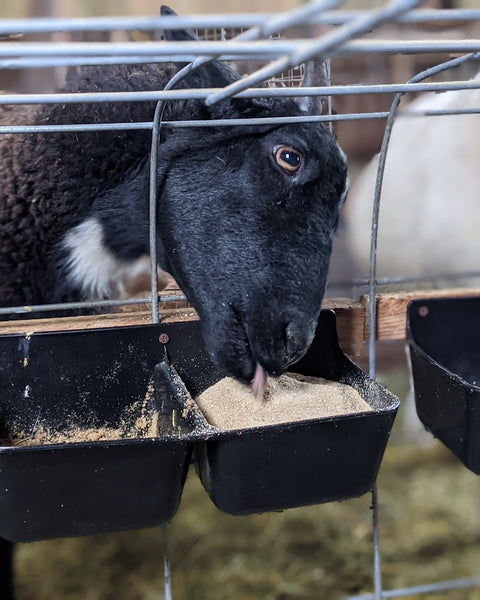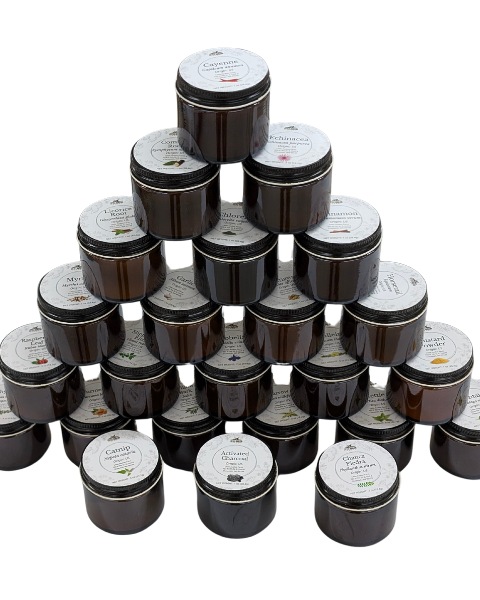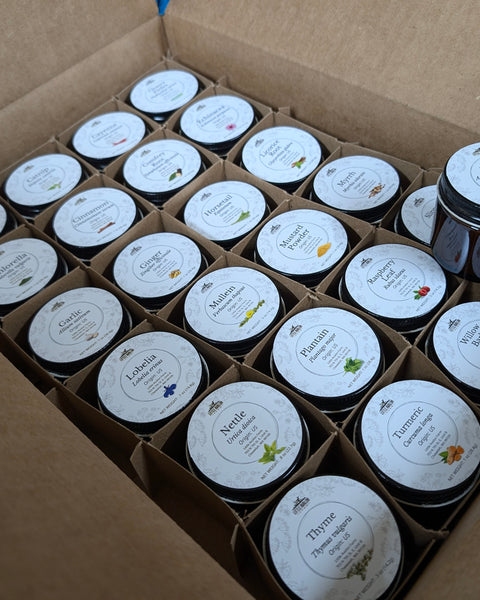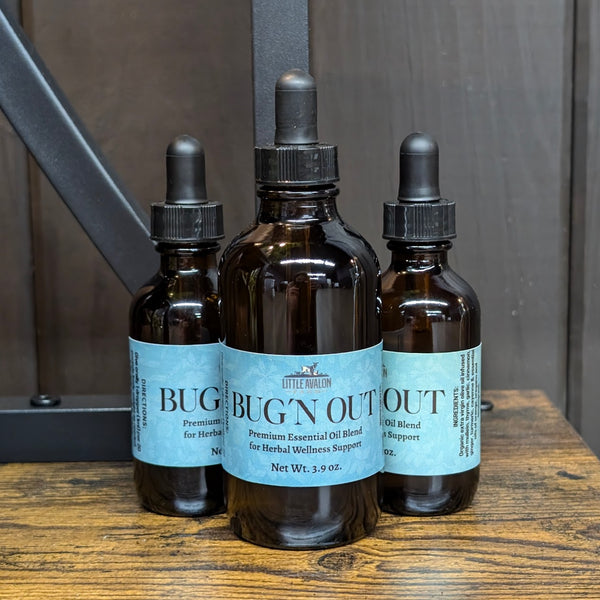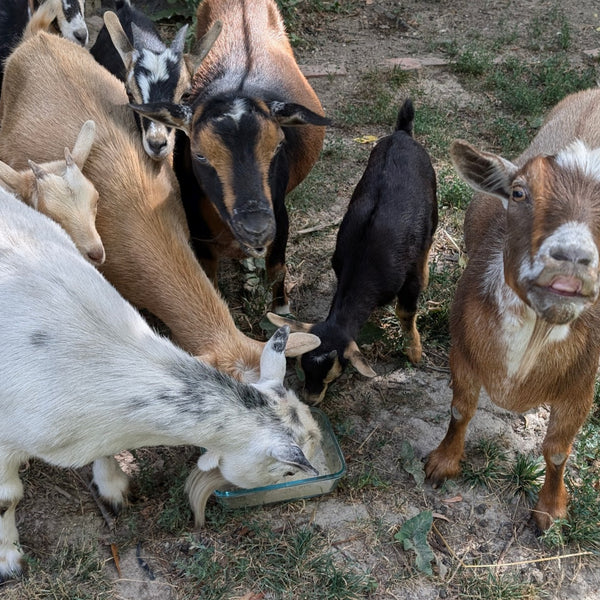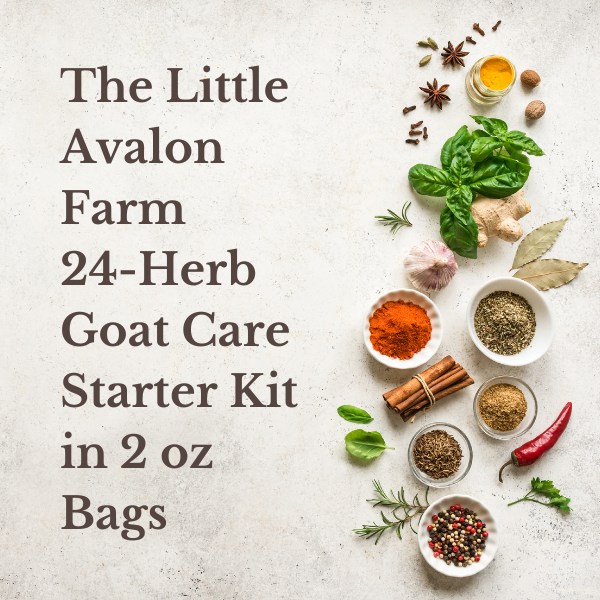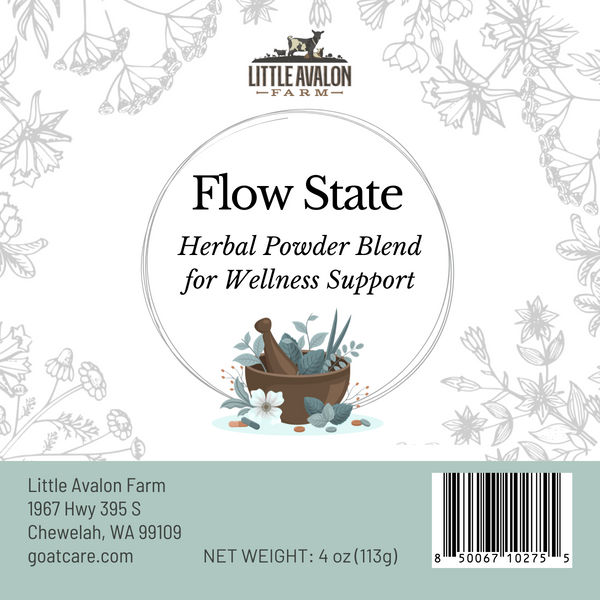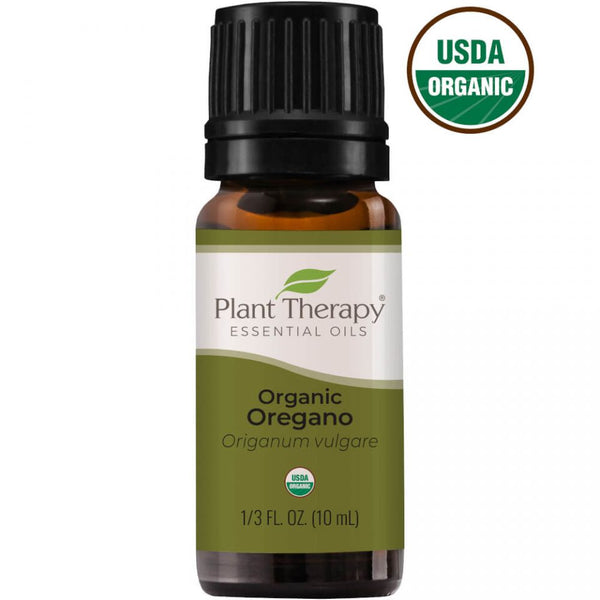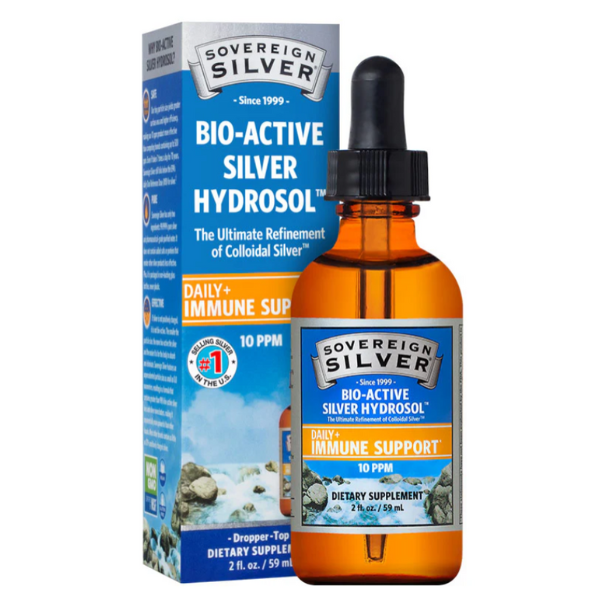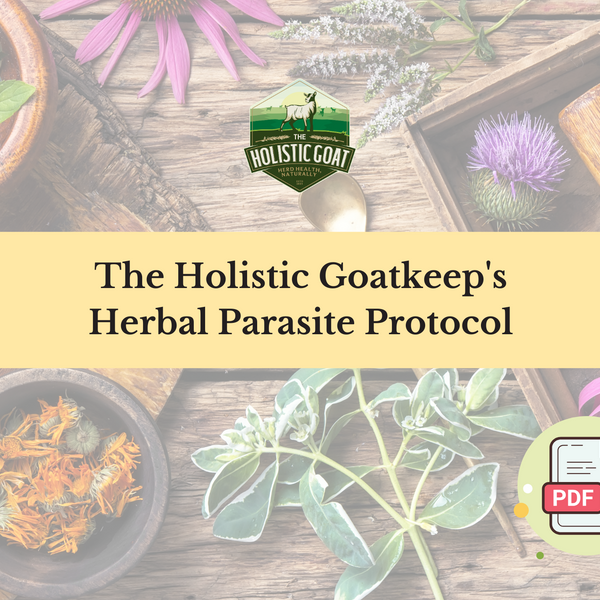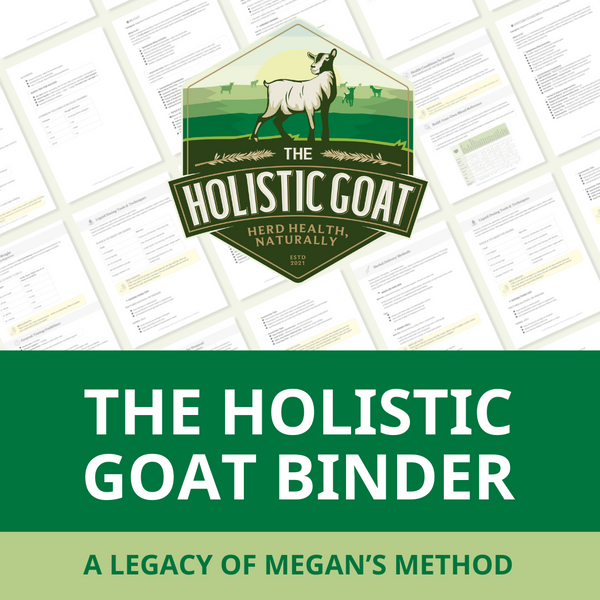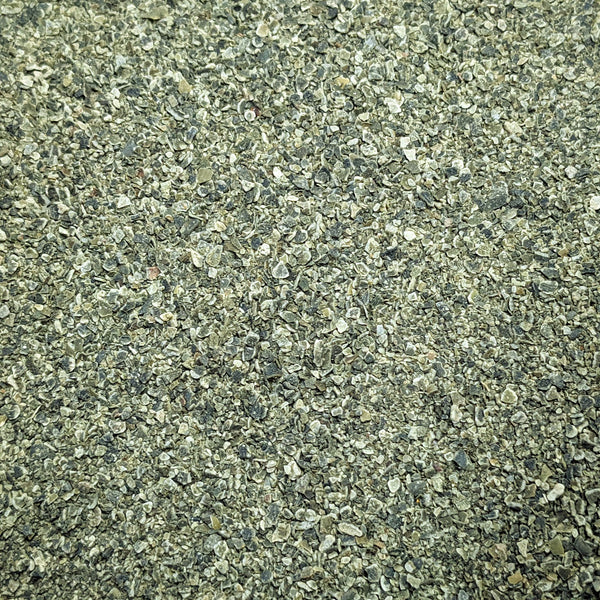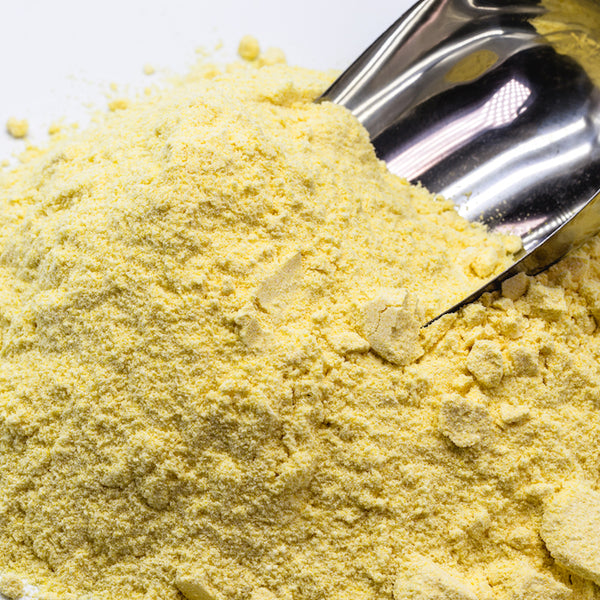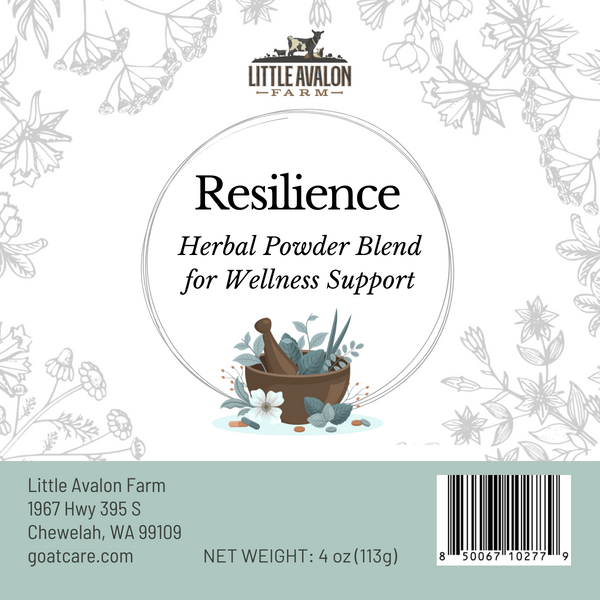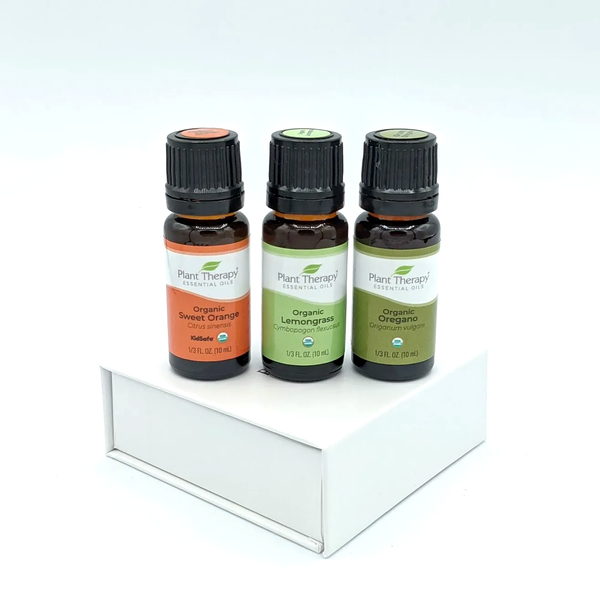As an Amazon Associate I earn from qualifying purchases.
We get asked all the time what to have on hand for goats. I created this thorough goat supply list for my goat care foundations course and am sharing it here so you can use it, too!
Without further ado, here's the goat supply list:
*Note: some links in this list are affiliate links, which means I receive a small commission if you make a purchase on Amazon. These links are marked with an asterisk (*).
Goat Supplies for Out in the Barn/Feeding Area (add barn items)
Water trough and spare bucket for mobile water or other needs
This Rubbermaid water trough* is the one I used for years until we moved to a place with a creek. It is low enough for Nigerians and has enough of a lip to easily attach a float valve for automated watering.
Tank heater or heated water bowl for winter climates
If you have a water trough, you’ll want an enclosed tank heater. I like this one* because it can be submerged and kept away from curious noses.
Float valve and hose for automated watering
I’m a big fan of automating processes wherever possible. This allows us to spend our time where we choose. Automated watering is essential for creating efficient systems.
If you have a standard sized trough, you can pick these ones up at most local feed stores.
When using a float valve, I like to use the smallest bucket or trough possible because this ensures the water is always flowing in and clean. The above float valve paired with this tub is a great combination - algae barely builds up because the water is constantly being refreshed.
And this setup is what I use still with my chickens. It’s the metal version of the float valve I linked above connected to a 5 quart bowl. Because I like redundancy of systems, that hose runs back to a 55-gallon barrel that has its own float valve as well and is connected to a faucet. This ensures that my chickens and rabbits will have water for weeks even if the power goes out. I can also add things like colloidal silver to this holding tank when I need to medicate.

Scrub brush for cleaning water trough
A short handled scrub brush is great for giving the water trough a quick weekly scrub to prevent algae buildup.
Hay feeder
It is almost always going to be more practical to build your own hay feeder but for a professionally built option, this feeder* looks nice and is easy to use.
For DIY ideas, check out our hay feeder ideas forum. When you build your own, you can share pictures there too!
Bowls for feeding grain, silage, etc.
I have about half a dozen of these rubber bowls for feeding the whole herd grains, silage or other items that can’t go into the hay feeder. I like that they’re short and wide, giving more room for more goats to fit at each bowl.
Secure grain storage (e.g., locking garbage can, old chest freezer)
You can fit about 300# give or take of whole grains into a standard garbage can. Make sure you choose a kind that locks and be sure you always store grain behind two fail safes: a locking door and a locking lid that is tied or otherwise secured. One of the most common fatal accidents is when goats break into the feed and overeat.
If you can find a non working chest freezer, they make perfect grain storage. Airtight and generally goat proof, they’ll keep grains fresh and rodent free for years.
Mineral feeders and mineral storage
If you’re using loose blended minerals, you can store them in a 5-gallon bucket with a lid. For the mineral buffet, we have members using grain storage pouches like this*, E-Z Crocks, or for an economy option, I like to just reuse spaghetti jars, applesauce containers or those handy Costco salt plastic tubs.
For feeders, there are many options but what’s more important than what you feed in is how you let goats access it.
Feeders placed on a wall will get climbed on, rubbed against and generally demolished in short order. If you put your feeders through a cattle panel or on the outside of the fence so they have to reach over a solid barrier to get to them, you can use just about anything that will hold the minerals.
These double mineral feeders work great but only if access is controlled - they didn’t last a week when I tried them where the goats could climb on/in. This is the feeder I use for my own buffet.
Knife or scissors for cutting hay bale twine, plus a garbage can for twine
Knives like these* with “seat belt cutters” are awesome for cutting twine, but any knife or scissor will work fine.
Twine also has a way of creeping out all over the land like little snakes crawling away and burying themselves half an inch under the soil to emerge when you’re about to take the best Instagram photo ever, so it’s a good idea to have a garbage can right where you’re opening bales in order to try to corral as much of it as possible.
Save a few strings of twine for emergency repairs
Twine is infinitely useful. You can emergency patch fences, make quick leashes or tie just about anything together with twine.
Stanchion (optional)
Some folks prefer to trim hooves on a stanchion. You can build or buy one, or tie the goat up to a fence for hoof trimming.
If you plan to milk, some sort of place to put the goat while you milk is useful, but it’s not a necessary expense for milking. See my article on non coercive milking for more info.
1-2 sets of hoof trimmers
My preferred option is these heavy duty, spring loaded trimmers. They’ve lasted for years and are maneuverable even on small hooves. Because of the spring loading, they’re much easier to use and don’t tire hands as quickly, so look for that feature in whatever option you choose.
Collar and leashes, show chain for posed pictures
Dog collars with breakaway clasps will work for goats. I used to keep collars on all of my goats but haven’t used them in years.
If you plan to show though, getting them used to leading early on can make the process much easier.
For everything else, grain works and doesn’t leave rub marks or have a risk of strangulation.
Spare length of rope for various needs
Plain rope of 10’-20’ is nice to have on hand for all manner of army things. I keep a couple extra horse lead ropes and several dog leashes as well.
Grooming brush
Horse body brushes are nice for grooming. Goats don’t typically have long enough fur to need much else, but you can get a dog slicker to help comb out cashmere during shedding season, which is typically spring.
4-6 pallets for making an emergency stall
Pallets can be tied together with baling twine to make a stall anywhere you need it. I like to keep a few on hand because they’re so versatile. These can often be found at businesses that receive freight - just call around your local businesses and you’ll probably find free pallets.
Electric fence tester for maintaining secure fencing
If you have any electric fencing, it’s a good idea to keep an electric fence tester on hand, especially if working on repairs.
Extra wire and posts for fencing repairs
Emergency repairs may not wait for the farm supply store to open, so keeping a couple extra posts and some additional wire on hand can save you if you have a break.
Tree protectors to prevent damage
Any trees within your goats’ home area will be damaged and eventually destroyed without some form of protection.
A highly effective, though perhaps less tidy-looking way is to make a square out of 4 pallets and secure it with screws. This completely denies access to the tree.
Another option is to wrap the trunk in chicken wire but I find this to be a more risky method.
Still another option is to put 4 t-posts around the tree and affix wire to those. Keeping the goats completely away from the tree with a distance of at least a few inches between the barrier and the tree is the most effective at preventing damage.
Enrichment items (toys, climbing structures)
Little Tykes brand outdoor toddler toys are the best goat toys EVER. If you can snatch some up at a yard sale or secondhand shop, you’re guaranteed to provide your goats with endless fun, season after season.
Other enrichment items include large wooden spools (often salvaged from electric and equipment companies), plywood platforms, stumps, logs or any other item that they can climb on without sharp edges or holes to put a leg through.
Goat Supply List: Health Care/In the House (add care items here)
Syringes in various sizes: 1ml, 3ml, 30-50ml (for oral drenching)
The most common size in my medicine kit is 3ml. I use these for dosing and, back when I still injected things into my goats, for injections as well.
The 1ml size works well for dosing small animals but isn’t necessary if you don’t plan on having very small kids.
Keep one or two 30-50ml syringes on hand for oral drenching of liquid items. I find syringes to be superior for oral drenching compared to a drench gun, but a drench gun works better when drenching herbs or other small particles.
Needles in 16, 18, and 20 gauge
If you will be administering injections or drawing blood for disease testing, it’s good to have a small assortment of needles in various gauges.
The smaller the number, the thicker the needle. 18-20 is better for blood drawing while 16 gauge works for injecting viscous fluids, such as some of the antibiotics.
Red top test tubes for blood draws, alcohol wipes
If you plan to draw your own blood, you’ll need red top test tubes to store the samples. Alcohol wipes are needed to sterilize the skin where you will be inserting the needle.
You’ll need a separate needle and syringe for every animal you’re drawing blood from in order to prevent cross contamination of the samples.
1-2 quick-read thermometers + covers
Many goat owners find thermometers to be useful diagnostic tools. It’s nice to have a backup in case you can’t find the first one.
Covers make for easier use because you don’t have to sterilize between uses.
Drench gun and spare o-rings
Drench guns are useful for administering thicker oral medicines. You’ll want to get spare o-rings so you can replace them as needed.
A lower cost alternative—and the way I give drenches here—is to cut the tip off of a leur slip syringe, leaving a hole slightly larger than the tip itself.
Vet wrap, gauze rolls
For emergency wound care, keep a couple rolls of vet wrap and gauze on hand so you can pack a wound.
Disinfectant solutions for cleaning equipment and facilities
Depending on your preferences, you may want to disinfect areas or supplies. The general standard for this is bleach, but I use colloidal silver in the rare event I need to disinfect.
Clipboard and record-keeping materials
I like to keep a clipboard and whatever spreadsheet I want to use for the moment out in the barn with a pen or two. This allows me to take notes I might otherwise forget.
You can also set up a note app on your phone.
Additional Supplies if Breeding/Milking (add breeding/kidding items)
Bottles and nipples with spares of each
I’ve tried all kinds of bottles and settled on these purple lamb nipples on a glass soda or beer bottle. Cut a little X in the tip and you can feed anyone.
Tubing outfit and a spare
It’s rare to need to tube a goat kid, but when you need to you’ll be glad you have a tubing outfit. They’re usually readily available in farm supply stores.
Tattoo outfit (5/16"), tattoo digit organizer
The “small animal tattoo outfit*” works for all goats and even rabbits. If you plan to have a lot of kids, get two sets so you can have your herd name permanently in one set and your unique ID in the other. This saves a ton of time because you don’t have to keep switching out with every ear while you’ve got an unhappy goat on your hands.
Castration tool
The three common castration methods are cutting, banding and elastration. It is beyond the scope of this course to go into detail about the methods, but I can give you suggestions on tools.
Banding tool here.
Elastrator tool here*.
California bander for larger animals here.
For cutting, disposable scalpels can be purchased at most vet or farm supply stores.
Milk stand or suitable place to milk away from the herd
As mentioned above, a milk stand is not necessary. A table, counter or other raised area is ideal, or you can sit on the ground. If you’d like to purchase a premade one, I’d recommend a metal one like this*.
Pail for milking
You can get all sorts of fancy “milk pails,” but after over a decade of hand milking, I’ve found nothing I like better than a short 3-quart Cuisinart saucepan like this one*. The key features are wide and low so you can easily milk both teats into the pan without having to finagle and aim.
Reusable coffee filter for filtering milk
For a non disposable option, a basic reusable coffee filter like this one* filters nearly everything, though you may occasionally find a hair goes just the right way and makes its way through. This is all I’ve used for basically ever. I add a canning funnel* over a mason jar, set this filter in the funnel and pour through.
If you’d rather have a more sterile, disposable option, you can get a pour over coffee filter with paper filters like this one*.
Glass jars for storing milk (quart, half-gallon or gallon mason jars)
Depending on the volume of milk you’ll be milking each day, quart, half-gallon or gallon mason jars are the way to go for storing the milk. I like to use smaller jars for little hands to more easily pour and I pair it with these pour spouts* for mason jars.
The Kidding Kit
2 bottles of calcium gluconate 23% injectable
Calcium gluconate is a must-have during kidding. It can help with any calcium related issues and will generally yield results within 30 minutes of oral dosing.
Bulb syringe
A bulb syringe* can be helpful for clearing lungs of amniotic fluid.
Write-on paper wrist event bands for temporary kid ID collars, a permanent marker for ID bands
It wasn’t until I had a pile of kids that I started using these to ID them. Marketed as event wristbands, they’re a perfect fit for Nigerian goat kid newborns. I bought them in pink* and blue* so I could quickly identify gender and I’d write dam name and birth order number on the tag.
A small bottle of cooking oil or coconut oil for lube if desired
Olive or vegetable oil works well as lube but it’s rarely needed because if you need to intervene there is generally some birthing fluid to lubricate the process.
Gloves if desired
You may choose to use gloves when assisting in a birth. If so, regular medical exam gloves* work well. If not, just keep fingernails trimmed, rings off and hands washed well.
Towels, rags
Your old bath towels make excellent goat birthing towels. I like a few rags in my kit too because they’re good for wrapping around hooves if you need grip to pull.
A small container to hold ½ teaspoon cayenne powder mixed with ¼ cup blackstrap molasses to boost weak/down kids or dam
You can get a finger dip of this concoction and swipe on the gums of a lagging kid or dam to bring a quick burst of energy.
Blow dryer for drying off kids in temps below 20F
The only reason I keep a blow dryer in the house is for kidding in freezing temps. It is extremely useful for getting ears and hooves dry to prevent risk of frostbite.
Portable storage tote for kidding essentials
A caddy like this* can be used to bring the essentials with you or you can keep a small tote like this* which is useful to keep things clean if you’re storing it in the kidding area.
Frozen colostrum (keep in the freezer unless needed)
If you have access to fresh colostrum from a goat, you can pour it in ice cube trays and freeze for small individual serving sizes. I like to milk the last goat of the year to save ahead for next year’s kidding season.
If fresh or frozen colostrum is not an option, farm store brand colostrum or Sav-a-Kid/Sav-a-lam powdered colostrum can be purchased locally. Amazon has Manna Pro here*.
Remedies
Colloidal silver in spritzer and dropper bottles
Colloidal silver is one of my top 3 goat medicine kit staples. Ideal especially for external use like wounds and eye issues, it can also be used internally for antibiotic effect.
Cayenne powder is a blood stop agent, shock treatment and source of B vitamins. I wouldn’t be without it.
Blackstrap molasses
Nutritive and sweet, blackstrap molasses helps rebuild the body and can sweeten the taste of other oral medicines.
If you made me choose one single item to keep in my kit for both goats and humans, it would be oregano essential oil. I have worked extensively with it and feel like there is no better ally for infections, respiratory issues and parasites.
Part of my parasite protocol, sweet orange is specifically indicated for barberpole worms.
The third in the trifecta of essential oils for parasites, lemongrass works both internally and externally to repel creepy crawlies.
Yellow sulfur powder is ideal for all things skin. Mixed with coconut oil, it makes a salve that tackles mites, staph, fungal issues, hot spots and more. Dusted topically, it will knock out lice in 2-3 applications.
Myrrh gum is useful both internally and externally. It helps combat parasites, bacteria and fungus and can be added to a salve for topical use.
Nettle is my favorite herb. Highly nutritive and healing, I put it in nearly every herbal remedy.
Mullein is anti-parasitic but more importantly, has a special affinity for the lungs, making it an excellent respiratory aid.
And with this goat supply list, you will be well on your way to having everything you need for a healthy herd.



